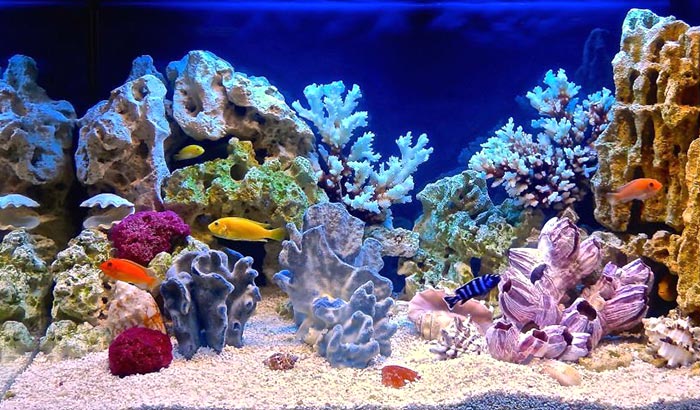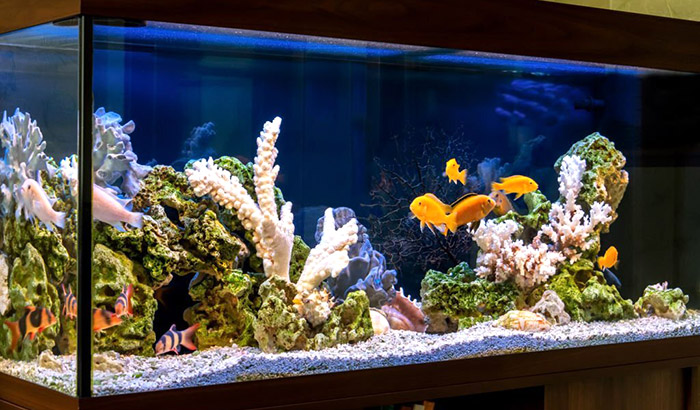It’s no mystery that you need calcium when keeping a reef tank. Calcium in the tank keeps the fish and corals solid and healthy. The perfect calcium level in a tank should be between 380 and 450 ppm. You should know how to lower calcium in reef tanks when it exceeds. There are three easy and practical methods to do this.
Wait for the Calcium Level to Go Down
As the subheading suggests, one way to effectively lower calcium in reef tanks is to wait. Wait for a week and see if it drops on its own.
Diligently observe the calcium level while you wait. There should be no harm done as long as it does not go beyond 550 ppm. Look for any possibilities the calcium level goes up or down.
If the calcium level in your reef tank does not go sky high after a week, you can continue waiting and watching. And even after waiting for weeks, if it still plays between 450 – 550 ppm, you can expect the calcium level to go down.
Cut Off the Calcium Supply
So, how to lower calcium in the reef tank if it goes up again after waiting? You can cut off the calcium supply. This straightforward method may sound odd to an aquarist like yourself, but it can help you lower the calcium level in your tank.
Typically, you would supply your tank with an equal dose of alkaline and calcium. Skip the calcium dose and observe the calcium level in your tank. Without the calcium supply, the corals in the tank will consume the excess calcium. Naturally, the calcium level should go down.
And another fact is that alkaline and calcium have an interdependent relationship. As the alkalinity in the water goes up, the calcium level decreases. But for how long should you cut off the calcium supply?
Continuing skipping the calcium dose until the calcium level drops to the ideal level of 380 – 450 ppm.
Change the Water Altogether
If the first two methods did not work, do not panic. Your fish tank is probably highly overdosed on calcium. This solution is easy, and it should be your last resort, change the water.
Strive to change 25% of the water every week. However, this may prove costly, especially for large tanks. For large tanks, change 10%-15% of the water weekly. And while you’re at it, add a lower to standard ppm salt mix.
You should be able to see results in a month. If the water highly overdoses with calcium, expect to change the water for longer.
Contents
How to Remove Calcium Build Up in Fish Tank
High calcium levels equal a high chance of calcium build-up, or limescale, in your fish tank. When you notice the calcium level getting high, you should already begin to know how to remove calcium buildup in the fish tank. There are easy ways to do this.
Wipe with Vinegar
Using vinegar could be your go-to method to remove calcium buildup. It involves only two steps, and it is cost-efficient.
First, get a clean cloth and wet it with vinegar. Then wipe the limescale that is found on the outside of the tank. You can also use a sponge for this method.
Note that you should avoid using vinegar in an active aquarium. The vinegar’s acidity can cause the pH level of the water to drop. So use this method on the outside of the tank only. You can also use this for removable aquarium equipment.
Lemon or Lime Juice as Alternative
An alternative for vinegar is lemon or lime juice. The acidity of the lemon and lime can help remove the calcium buildup. However, it is not nearly as strong as vinegar, but it helps.
The process for this method is the same as with the vinegar technique.
Use Aquarium Cleaner
If the calcium buildup is too thick for lemon/lime juice or vinegar to remove, you can purchase an aquarium cleaner from a local store. An aquarium cleaner is a non-toxic product specially made to remove limescale in fish tanks.
For the procedure, follow the same method using vinegar unless otherwise stated on the product’s instruction for use.
Perform Regular Maintenance
Regular removal of calcium buildup can save you the effort of tedious wiping and scrubbing. You can wipe away the limescale at your leisure, or you can establish a routine.
Remove limescale at least every two months. Remove it whenever you change the water. Make it part of your aquarium routine maintenance.
Keep in mind that it is easier to remove a thin build-up frequently than remove it when it has hardened and thickened once.
Conclusion
Although calcium is essential to keeping your reef tank habitats healthy, too much of it is fatal. Always watch and observe your tank’s calcium level and other water parameters. And when it goes up, at least now you know how to lower calcium in reef tanks.


